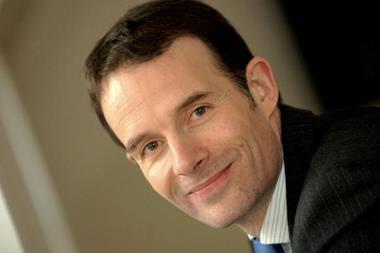The cheap and cheerful market of better times has become an unaffordable luxury, says Philippe Maso as he argues for a shift from volume to value
THERE?ARE three cycles in the insurance business: the economic cycle, the pricing cycle and the distribution cycle. The problem is they are not always synchronised.
Over the past 20 years, the UK commercial insurance sector has followed a consistent and predictable pattern. Variation between hard and soft markets generally follows a seven-to nine-year cycle and, as most would agree, the bottom of the cycle last occurred in 2000. History indicates that 2009 is likely to be the year of the upturn.
Times have certainly been hard for insurers and brokers in the past few years. As capacity flooded the market, prices were driven down, insurers stripped margins to the bone and, consequently, brokers saw a suppression of commission income. Many insurers have lost money and we now are seeing the early signs of rising prices as insurers pull capacity back.
The situation is exacerbated by a combination of high claims inflation and an increase in large losses. The severe weather events of recent years have not helped. The storms and floods of 2007 cost the UK insurance industry £3bn and in the US, Hurricanes Hugo and Ike are estimated to have caused losses of between $11bn (£7.5bn) and $16bn, leading to a noticeable rise in reinsurance rates on top of the domestic market.
While prices are beginning to rise, the market has not yet turned as much as many of us thought it would, partly because of the present extraordinary market conditions. Conversely, this downturn makes a rise in prices all the more important following the global fall in equity markets, which has the following effects.
First, it puts pressure on insurers’ return on capital. As equity markets fall, capital becomes scarcer, which puts a higher demand on the returns generated by the diminished capital base. As a result of this insurers will increase prices and focus on underwriting higher quality risks and classes of business. Insurers must shift their focus from volume to value and take the opportunity to achieve better returns. Too many of us struggle with product profitability, with large variations across different classes of business, even in the commoditised product areas, such as personal motor.
Second, businesses across the economy are under pressure from falling demand and the need to reduce expenses. Expenditure on risk management and routine maintenance is likely to be postponed, sums insured and cover may be reduced. Brokers will be driven by the customer to broke more business to the market.
There are, therefore, two strong conflicting factors at work as insurers try to increase prices without losing market share and businesses try to minimise insurance costs.
In the more complex risk areas, competition is likely to drop significantly and those with the risk management and product capabilities, experience and risk appetite will be able to capitalise. The key is to ensure that the pricing reflects the market and that insurers gain the right value for the expertise they bring.
General insurers should also review where and how they play across the value chain. Many third parties have infiltrated the insurance value chain in recent years, some by invitation and some by force. Opportunities will open up for insurers to dictate stricter terms to managing general agents in return for capital support. Players must determine where they want to play by market and by step in the value chain, shift capacity, make investments and partner with the right third parties.
Insurers and brokers share the pain when the market is soft and recover their margins in the hard market. The low-price, low-margin market conditions of the past few years have come to an end. If the market is to be sustainable, all insurers must be brave and increase their prices. Survival may depend upon it.
Brokers must contribute to the upturn too. They know there is a difference between premium brand capacity, expertise and service and the cheapest price and they should advise their clients accordingly. Their clients deserve the most effective cover and the best support for their needs, especially in these difficult times, and price should not be the driver. Brokers should use the same criteria when selecting their insurer relationships for the medium term.
At AXA we are determined to push through a rate increase policy in all classes of business and we have shown our resolve to walk away from unprofitable accounts. Financial stability will only be achieved through profitable growth. This will mean charging the right price for the right product at the right time.
Real rate increases have now become a business imperative, not an underwriting ambition. It’s not an easy process and difficult decisions will need to be taken. While we can all be pragmatic, we can’t walk away from this reality.
Philippe Maso is chief executive of AXA Insurance.





































No comments yet